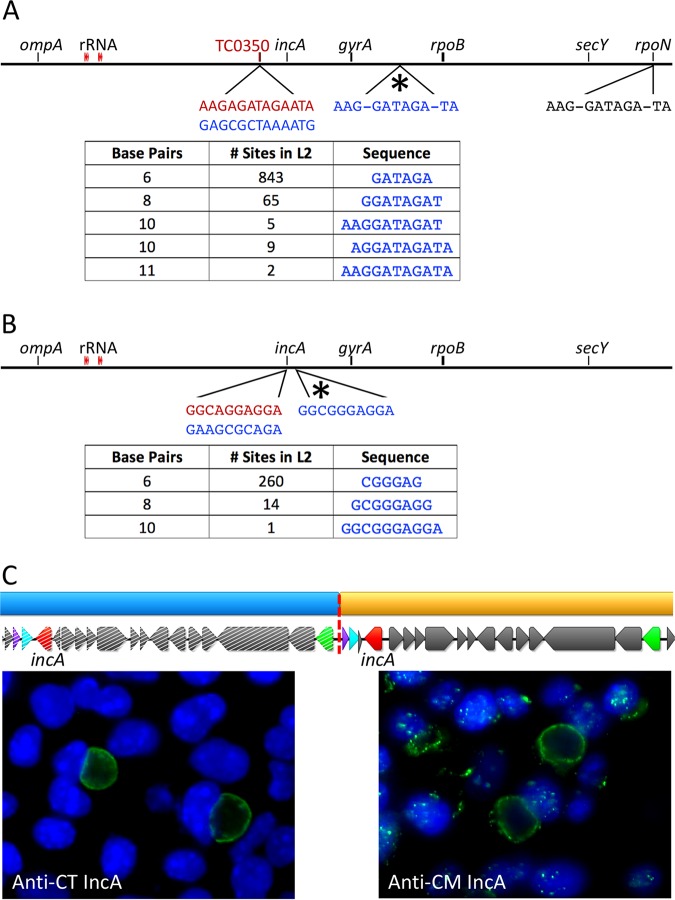FIG 5.
Examination of progeny strains using nonhomologous target sites in recombination. Strains RC936 (A) and RC1201 (B and C) have sequences that result from one (RC1201) or both (RC936) recombination endpoints occurring at nonhomologous target sites. (A and B) C. muridarum sequence is indicated in red, while C. trachomatis sequences are indicated in blue or black. In both cases, the predicted target of recombination shares no immediate identity with the C. muridarum donor DNA. The actual site of recombination, indicated with an asterisk above each linear chromosome, is either identical with the donor DNA sequence (RC1201) or very nearly identical (RC936). The tables show the numbers of occurrences in the recipient chromosome for increasingly long candidate target sites. In panel A, a second, identical target sequence is identified within rpoN. This target was not used in any identified recombinant. (C) The illegitimate recombination event at one end of the integrated DNA led to a duplication of ∼16 kb of chlamydial DNA. The recipient DNA (C. trachomatis; blue, with hatched ORFs) and the donor DNA (C. muridarum; tan, with solid ORFs) are largely homologous in this region. This clone carries homologous copies of incA (red) from each species, and the protein products of both genes are expressed and correctly localized to the inclusion membrane (green labeling in the micrographs). Host cell nuclei are labeled blue with DAPI (4′,6-diamidino-2-phenylindole) in each micrograph.

